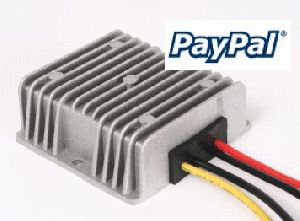

"One-Quadrant Switched-Mode Power Converters". While the air gap features much lower permeability, accordingly has higher energy density.

For the flyback converter, the transformer gap can have the function of energy transmission through cycles of charging and discharging. It not only determines inductance but also stores energy. Accordingly, the flyback converter's transformer air gap has two functions.

In each cycle, the flyback converter's transformer first gets charged and then releases its energy to the load.

There will be no current flowing through your body. The secondary circuit is floating, when you touch the secondary circuit, you merely drag its potential to your body's potential or the earth's potential. Transformers are used in power converters to incorporate: ( September 2022) ( Learn how and when to remove this template message) See Wikipedia's guide to writing better articles for suggestions. This section's tone or style may not reflect the encyclopedic tone used on Wikipedia. Why use transformers in power converters (There are also consumer "adapters" which merely form an electrical connection between two differently shaped AC power plugs and sockets, but these change neither voltage nor frequency.) Consumer voltage converters (also known as "travel converters") are used when traveling between countries that use ~120 V versus ~240 V AC mains power. Conversely, internal 400 Hz internal power may be converted to 50 Hz or 60 Hz for convenience power outlets available to passengers during flight.Ĭertain specialized circuits can also be considered power converters, such as the flyback transformer subsystem powering a CRT, generating high voltage at approximately 15 kHz.Ĭonsumer electronics usually include an AC adapter (a type of power supply) to convert mains-voltage AC current to low-voltage DC suitable for consumption by microchips. Aircraft often use 400 Hz power internally, so 50 Hz or 60 Hz to 400 Hz frequency conversion is needed for use in the ground power unit used to power the airplane while it is on the ground. In North America and northern South America, it is usually 120 volts, 60 hertz (Hz), but in Europe, Asia, Africa, and many other parts of the world, it is usually 230 volts, 50 Hz. The standard power voltage and frequency vary from country to country and sometimes within a country. There are also devices and methods to convert between power systems designed for single and three-phase operation. Finally, the task of all power converters is to "process and control the flow of electrical energy by supplying voltages and currents in a form that is optimally suited for user loads". One way of classifying power conversion systems is according to whether the input and output are alternating current or direct current. Power converters are classified based on the type of power conversion they do. Power conversion systems often incorporate redundancy and voltage regulation. The term can also refer to a class of electrical machinery that is used to convert one frequency of alternating current into another. The power converter can be as simple as a transformer or it can be a far more complex system, such as a resonant converter. A power converter can convert alternating current (AC) into direct current (DC) and vice versa change the voltage or frequency of the current or do some combination of these. A power converter is an electrical or electro-mechanical device for converting electrical energy. In all fields of electrical engineering, power conversion is the process of converting electric energy from one form to another.


 0 kommentar(er)
0 kommentar(er)
